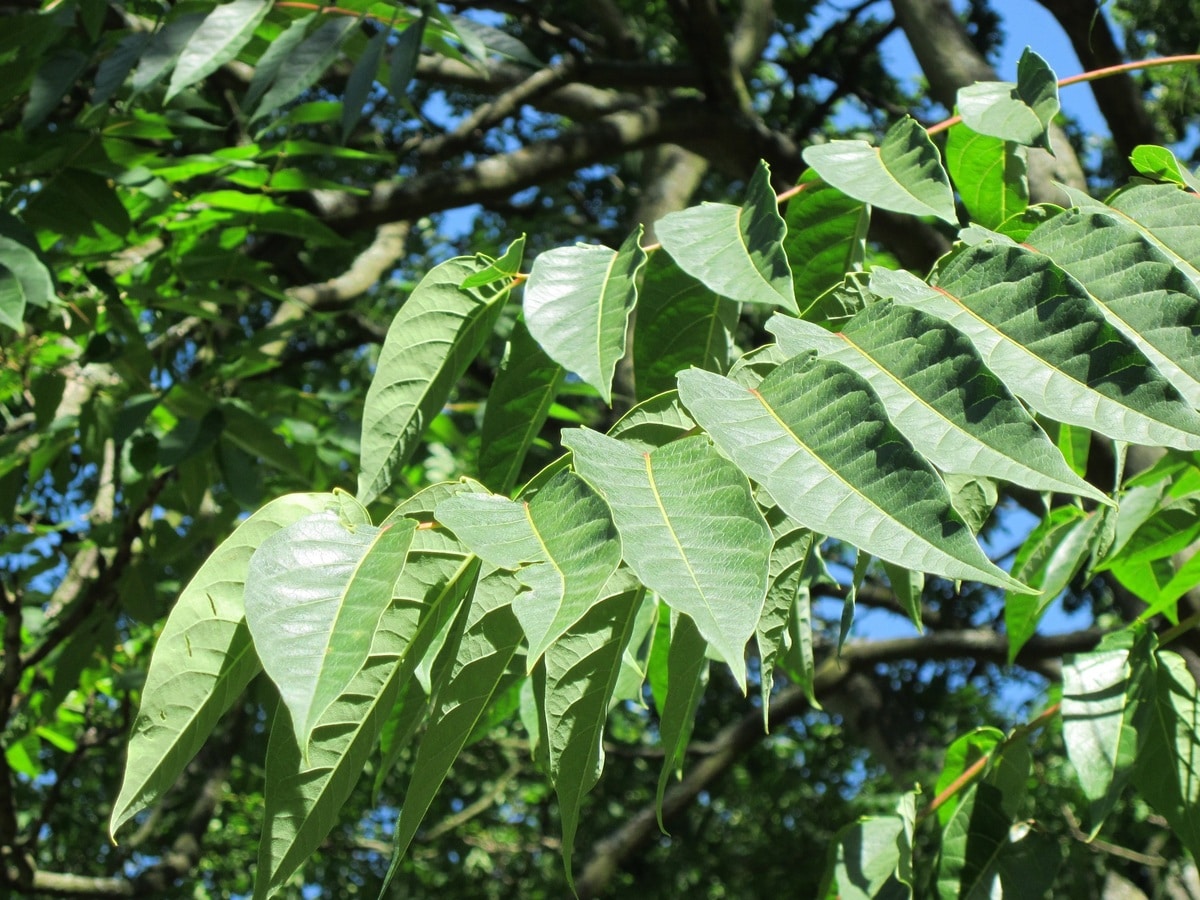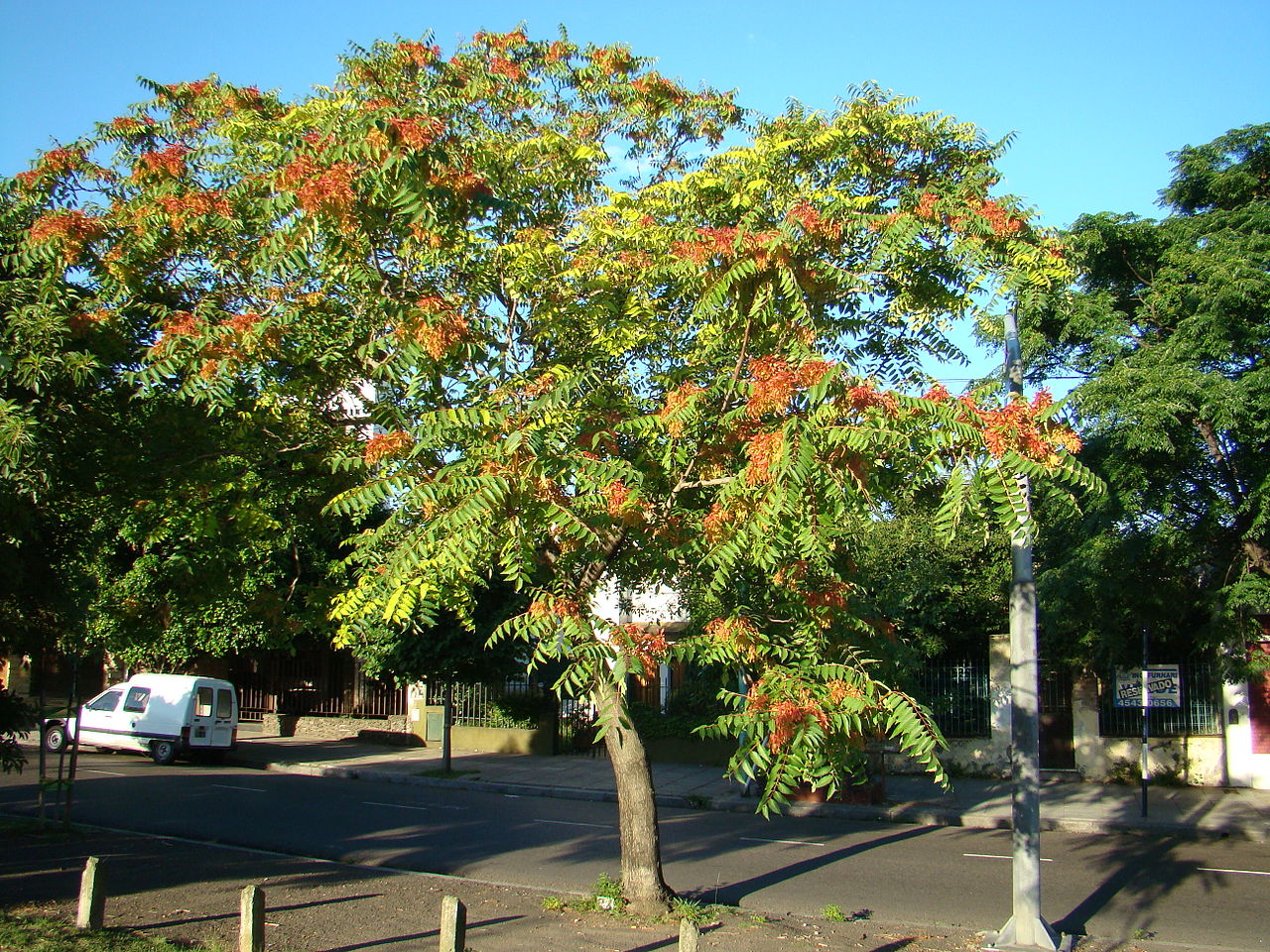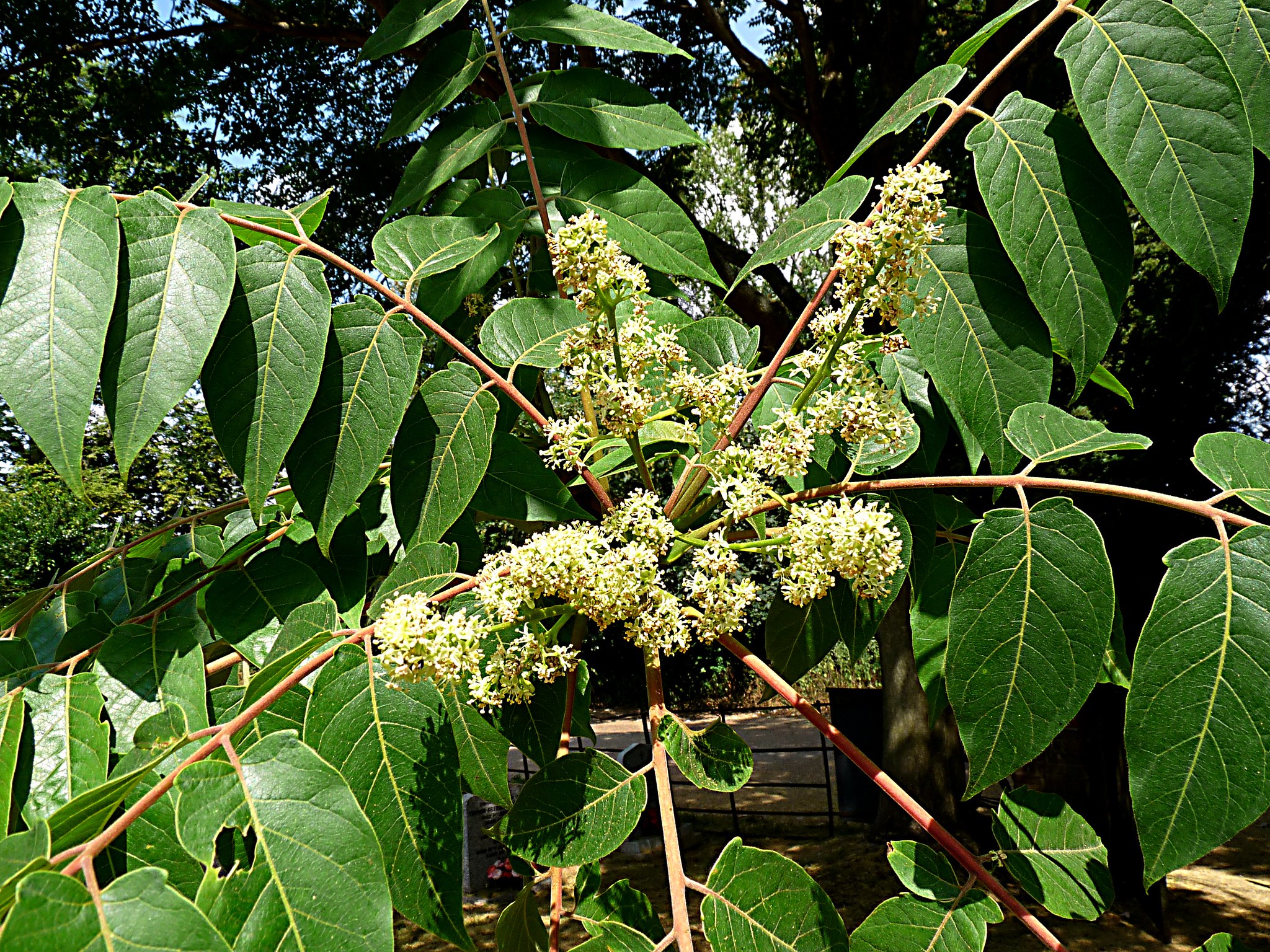
El Ailanthus altissima it is a very fast-growing tree that is highly adaptable if it has a constant supply of water nearby and the soil in which it grows is rich enough in nutrients to ensure its survival.
Likewise, it is a very beautiful plant, which provides a pleasant shade in a matter of a few years. However, its ornamental value is drastically reduced when it grows uncontrollably in a habitat that is not its own.
What is the origin and characteristics of the Ailanthus altissima?

This is a deciduous tree native to China whose scientific name is Ailanthus altissima, and known by the common names ailanthus, tree of heaven, tree of the gods, or false sumac. Grows to a maximum height of 27 meters, with a trunk about 40 centimeters thick. The bark is grayish and tends to crack over the years.
The leaves are composed of eight pairs of leaflets or pinnae, which have a long petiole. Its flowers form groups called inflorescences, and they bloom in spring. The fruit is a samara containing numerous dark-colored seeds.
Its growth rate is very fast, being able to grow about 50-70 centimeters each year.. This also makes it bloom early, about 2 years after germination. For all these reasons, and as is the case with other species that grow so quickly, their life expectancy is short, around 40-50 years.
It can live in a wide variety of climates, since it can withstand frosts of up to -18ºC and maximums of up to 40ºC as long as it has water within its reach. All you need is for the temperature to drop below 0º at some point.
What uses is it given?

Image sourced from Flickr/Hornbeam Arts
Ailanthus is a plant that was introduced in Spain in the mid-eighteenth century, since it grows very fast and it was beginning to be necessary to repopulate the mountains. But the thing did not go well, since they soon realized that it had a great potential invader; that is germinates too easily, and because of this it takes away land from native plants.
The problem does not end there. Not only does it prevent the natives from growing, but it also reduces biodiversity, and therefore, the ecosystem becomes poorer. For all these reasons, this species is included in the Spanish Catalog of Invasive Alien Species since August 2, 2013, possession, transport, trade, traffic, and of course also introduction into the natural environment is prohibited.
very useful information, I am observing great proliferation of this species in parks and gardens
Thank you Raul for your comment.
Yes, this species is very very invasive. It produces many seeds, and if they find a little water... that's where they will germinate.
A greeting!
Hello, how many fruits approximately does it produce per year?
Hi Loren.
The truth is that I do not know. It will depend on the age of the tree in question and how big it is at the time. I couldn't tell you a figure, maybe more than 50 if he's an adult.
Greetings.